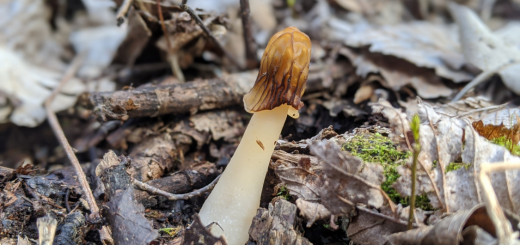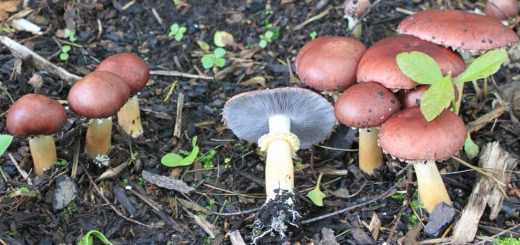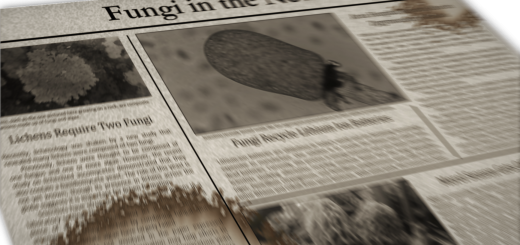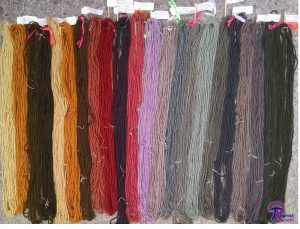#020: Aleurodiscus oakesii, Smooth Patch Disease of Oak [Archived]
Note: This is an archived post. You can read the current version of the post here.
How to use a trees to identify a mushroom (without seeing the actual mushrooms):
If you are more than a casual observer of trees you have probably learned that oak trees often have smooth patches in their normally rough bark. What you may not know is that these smooth patches are caused by the fungus Aleurodiscus oakesii. This fungus only feeds off of the tree’s bark, so it does not cause any damage to the tree. However, it does result in patches of bark that are more smooth than usual. These patches are known as “smooth patch disease.” As the fungus is not harmful to the tree, the main impact of the disease is the undesirable cosmetic effect it has on trees in peoples’ The disease is common on oaks, especially on white oaks, although it can be found on many other hardwoods. The fungus produces tiny mushrooms that are mostly flat against the bark and usually less than a centimeter across in any direction. The mushrooms are a light brown on the top and a powdery white underneath. The edges of the mushrooms are often upturned, making the underside visible. Because of the mushroom’s small size and dull colors you’re more likely to find this mushroom by looking for the smooth patches in hardwood tree bark. The mushrooms can often be found around the edges of the smooth patches. A. oakesii also demonstrates that mycologists are pretty good at coming up with scientific names. “Aleuro” means flour, which refers to the powdery edges of the fruiting bodies. “Discus” refers to the roughly circular shape of the mushrooms. You’ll agree that Aleurodiscus is an apt name for this fungus. However, its species name, oakesii, is the truly clever part of the name. It is actually a pun on the name of the man who collected the first recorded specimen of the fungus: William Oakes. How appropriate that Oakes’ powdery, circular fungus has a preference for growing on oak trees.
See Further:
http://www.mushroomexpert.com/aleurodiscus_oakesii.html
http://botit.botany.wisc.edu/toms_fungi/apr2006.html
http://www.forestryimages.org/browse/subthumb.cfm?sub=813 (photos)









![#011: Characteristics of Kingdom Fungi [Archived]](https://www.fungusfactfriday.com/wp-content/themes/hueman/assets/front/img/thumb-small-empty.png)

